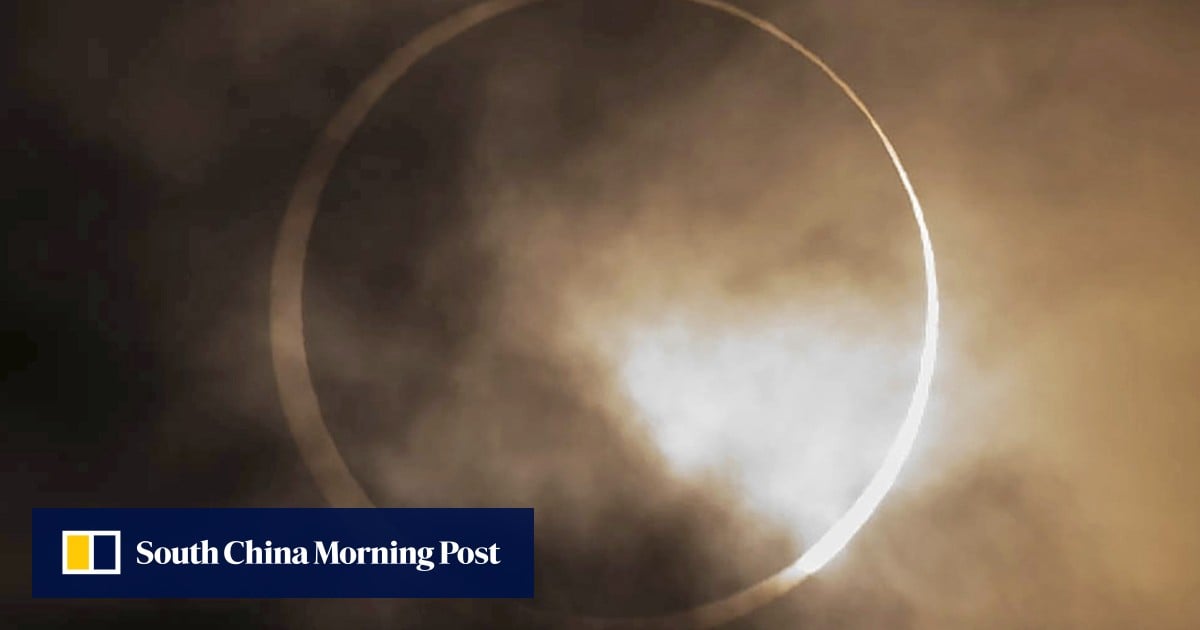Skygazers watch ‘Ring of Fire’ eclipse over Western Hemisphere
The rare solar event moved across the Western US, crossing into Mexico and Central America, then into South America. Skygazers across the Americas turned their faces upwards Saturday for a rare celestial event: an annular solar eclipse. The eclipse was crossing a handful of major cities, including Eugene, Oregon and San Antonio, Texas, with partial eclipse phases lasting an hour or two before and after. At any given location, it will be visible from between 30 seconds and five minutes, but people are urged to take safety precautions and use solar viewing glasses, and never regular sunglasses, to preserve their vision. The event also serves as a dress rehearsal before a total eclipse set for April 2024. To study these effects, Nasa will launch three rockets from the White Sands Missile Range in New Mexico to gather data on the electric and magnetic fields, electron density and temperature.

Published : 2 years ago by Agence France-Presse in World
Over just a few hours the most striking “path of the annularity” was crossing a handful of major cities, including Eugene, Oregon and San Antonio, Texas, with partial eclipse phases lasting an hour or two before and after.
Since it is so distant, it does not cover the sun completely, creating a “ring of fire” effect that brought cheers from the crowd in Albuquerque.
A crowd of people wearing protective eyewear gathered in Albuquerque, New Mexico, one of many across the western United States to watch as the moon passed between the sun and Earth at its furthest point from our planet.
Skygazers across the Americas turned their faces upwards Saturday for a rare celestial event: an annular solar eclipse.
At any given location, it will be visible from between 30 seconds and five minutes – but people are urged to take safety precautions and use solar viewing glasses, and never regular sunglasses, to preserve their vision.
“Do NOT look at the sun through a camera lens, telescope, binoculars, or any other optical device while wearing eclipse glasses or using a handheld solar viewer – the concentrated solar rays will burn through the filter and cause serious eye injury,” Nasa says.
The eclipse was crossing into Mexico and Central America, then into South America through Colombia and northern Brazil before ending at sunset in the Atlantic Ocean.
The event also serves as a dress rehearsal before a total eclipse set for April 2024.
Both eclipses are going to be “absolutely breathtaking for science”, said Madhulika Guhathakurta, a heliophysics programme scientist.
Solar eclipses have a noticeable effect on the upper atmosphere, such as the ionosphere, which is full of charged particles and responsible for reflecting and refracting radio waves.
“Although the atmospheric effects of solar eclipses have been studied for over 50 years, many unanswered questions remain,” Guhathakurta said.
To study these effects, Nasa will launch three rockets from the White Sands Missile Range in New Mexico to gather data on the electric and magnetic fields, electron density and temperature.
A total eclipse took place in 2017 in the United States. After next April’s total eclipse, there will not be another until 2044, while the next annular eclipse will be in 2046.
Topics: Ring
